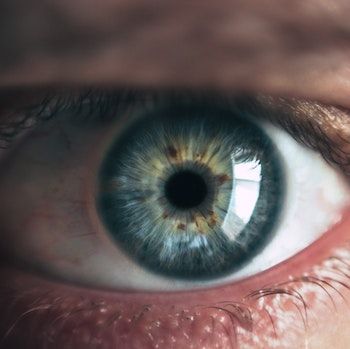News
Article
Age, Genetics Help Predict Proliferative Sickle Cell Retinopathy
Author(s):
Age and sickle cell disease genotype predicted individuals with sickle cell retinopathy at risk for proliferative disease.
Credit: Victor Freitas/Unsplash

Age and genetics could help the prediction of outcomes related to proliferative sickle cell retinopathy (PSCR), including vision-threatening effects and more advanced disease stages, according to a poster presented at the 2024 Association for Research in Vision and Ophthalmology (ARVO) Meeting.1
Complications from PSCR represent a significant cause of vision loss among patients with sickle cell disease (SCD) — investigators learned a mean age above 35 years old and the hemoglobin SC (HbSC) genotype were indicators of PSCR.
“From our analysis, we discovered that age and genetics can help predict if someone will develop a more advantage and potentially vision-threatening form of sickle cell retinopathy,” wrote the investigative team, led by Phiwinhlanhla Ndebele-Ngwenya, Howard University College of Medicine.
Considered the most serious, and most common, vision-threatening complication of SCD, PSCR is presumed in 0.5% of patients with hemoglobin SS (HbSS) disease, the most severe variant of SCD, and 2.5% of patients with HbSC disease. Ocular involvement in beta-thalassemia ranges from 41% to 85% across the available literature.
There is no treatment to prevent the development of sickle cell retinopathy, with therapeutic intervention recommended in the case of stage 3, with the presence of large sea fans, and stage 4 and stage 5 disease. Laser photocoagulation is a standard treatment for sickle cell retinopathy, with anti-vascular endothelial growth factor (VEGF) injections a newer, effective option for the condition.
For this analysis, Ndebele-Ngwenya and colleagues sought to determine those with sickle cell retinopathy at risk for the proliferative stage disease and to describe the clinical outcomes of individuals with PSCR.
To do so, the team performed a retrospective chart review for patients with SCD who received an eye examination at Howard University Hospital between August 2016 and March 2022. Evaluated factors included age, sex, SCD genotype, sickle cell retinopathy severity, refractive error, and visual acuity (VA) at both the baseline and final recorded visit were reviewed in the chart.
Investigators also marked the utilization of vitrectomy, laser, and hydroxyurea therapy as treatment methods in the analysis. Snellen measurements of VA were converted to logMAR for comparison. Vision loss in PSCR was categorized as impaired (<20/70), legal blindness (<20/200), and severe vision loss (<20/800) in ≥1 eye and then compared baseline to the final vision.
A total of 202 patients were included for analysis—these patients had a mean age of 35.8 years and 60% were male. Among that population, 85 (42%) patients demonstrated sickle cell retinopathy, 28 (33%) with non-proliferative retinopathy and 57 (67%) with PSCR.
Specifically, those patients with PSCR exhibited genotypes, including 12 (21%) with HbSS, 37 (65%) with HbSC, 4 (7%) with Hb thalassemia, and 4 (7%) with sickle cell trait.
Upon multivariate regression analysis, Ndebele-Ngwenya and colleagues identified age >35 years (odds ratio [OR], 2.86; P = .006; 95% CI, 1.35 - 6.06) and HbSC disease (OR, 4.79; P = .00; 95% CI, 2.06 - 11.12) as PSCR-related risk factors. More than half (61%) of patients with PSCR developed a vision-threatening complication during the study period.
Vision loss rates in patients with PSCR were 46% in those with impaired (20/70) vision, 31% in those with legal blindness (<20/200), and 23% in those with severe vision loss (<20/800). Again, more than half (60%) of patients underwent laser and/or vitrectomy during the study period.
Based on these data, Ndebele-Ngwenya and colleagues cited the role of genetics and age as a potential predictive factor if a patient with PSCR will develop a more advanced, vision-threatening form of the disease.
“Further studies are needed on how to identify the best methods for early detection and optimal treatment of patients with PSCR,” Ndebele-Ngwenya and colleagues wrote.
References
- Ndebele-Ngwenya P, Oluwasola T, Akinyemi O, Yousuf S. Anti-VEGF Therapy for Stages 3 and Stage 4 Proliferative Sickle Cell Retinopathy Results in Improved Anatomic and Visual Outcomes. Poster presented at the Association for Research in Vision and Ophthalmology (ARVO) 2024 Meeting, May 5–9, 2024.
- Feroze KB, Azevedo AM. Retinopathy Hemoglobinopathies. [Updated 2023 Jul 17]. In: StatPearls [Internet]. Treasure Island (FL): StatPearls Publishing; 2024 Jan-. Available from: https://www.ncbi.nlm.nih.gov/books/NBK441850/





